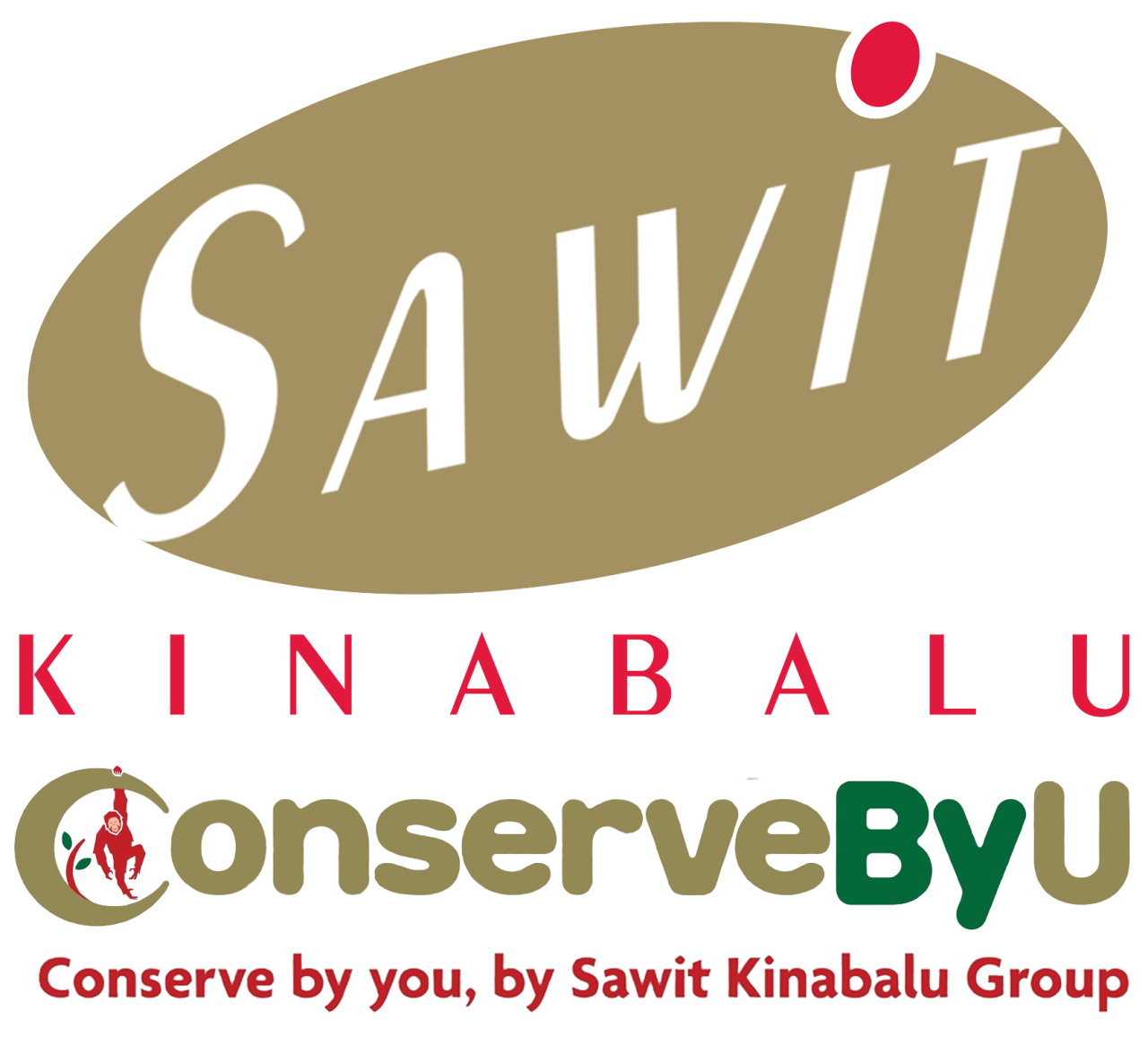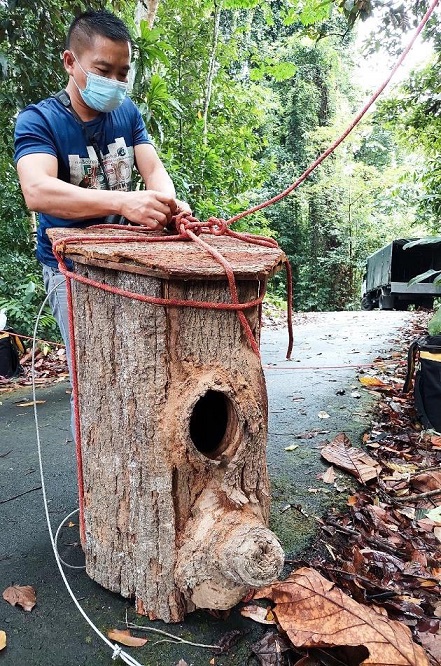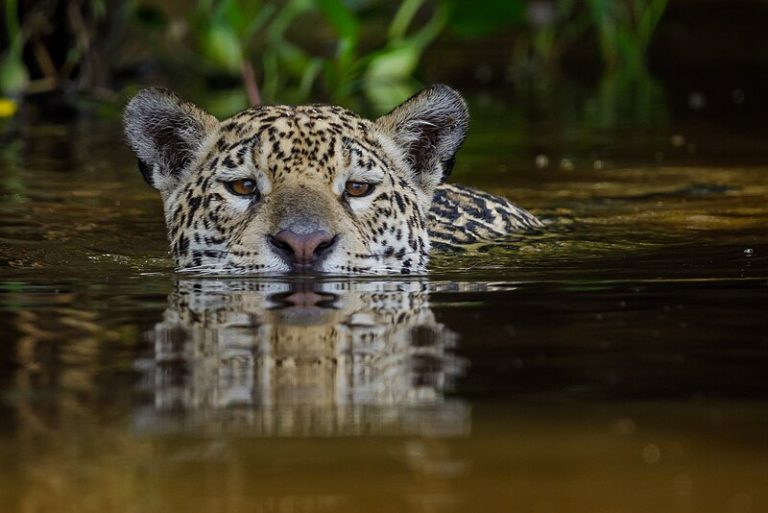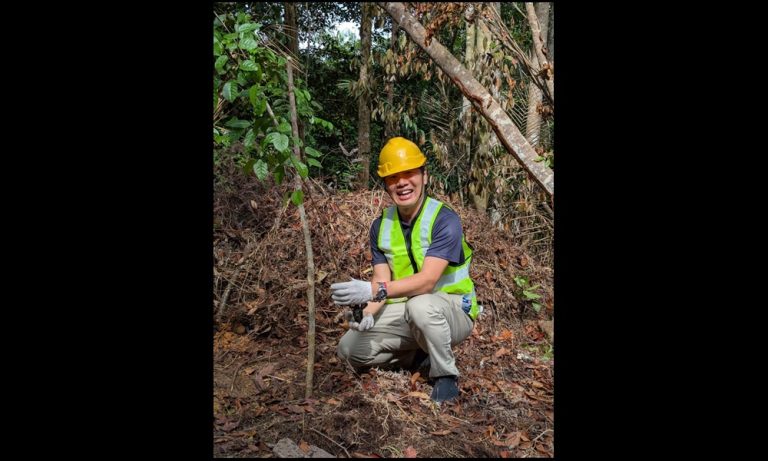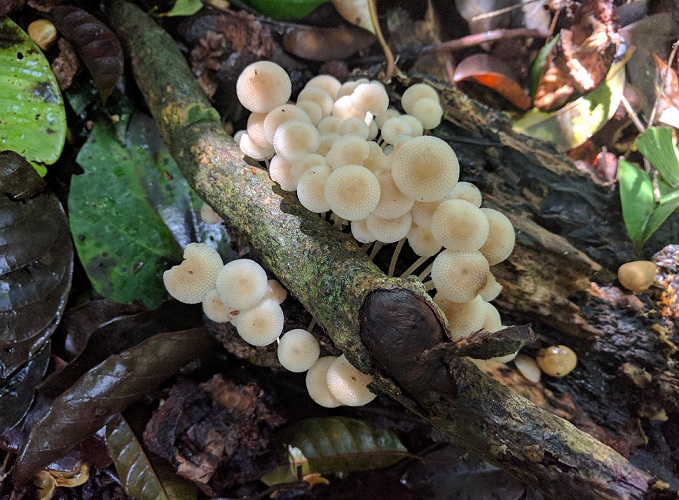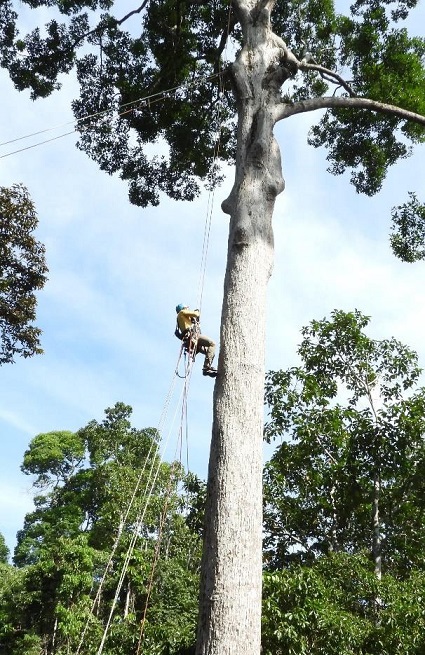
What are artificial nest boxes?
This term may sound alien to many of us. Artificial nest boxes are man-made structures designed to provide a safe and suitable space for birds, mammals, or other animals, including insects, such as bees, to nest in. These boxes are typically used when natural nesting sites, like tree cavities or cliff faces, are scarce or unavailable due to habitat changes or development. They are normally tailored to the species needs of the target species, including size, shape and entrance hole diameter. Generally, they are made from wood, but also can be constructed from other durable materials, such as recycled plastic or metal. These nests are often installed in locations that mimic natural nesting habitats, usually designed for easy cleaning and monitoring to ensure safety and functionality.
Why are artificial nest boxes important?
By providing safe nesting spaces, artificial nest boxes play a key role in conservation efforts and maintaining biodiversity, especially in areas where natural habitats are limited. They are simple yet effective and innovative tool supporting target wildlife species conservation, with significant elements as highlighted here:
Habitat and wildlife conservation: they help support wildlife populations in areas where natural nesting sites have been lost or degraded.
Supporting declining species: some arboreal wildlife rely on specific types of nesting sites. Artificial boxes provide an alternative and can help minimise population declines.
Research and monitoring: they allow for the monitoring of bird or other animal populations, offering an easy way to study nesting habits and reproductive success.
Protection from predators and harsh conditions: artificial nest boxes can offer better protection from predators, such as raccoons or squirrels, and can be designed to keep out elements like rain, wind, or extreme temperatures.
Human-wildlife Interaction: in urban and suburban areas, these boxes can help foster a connection between people and wildlife, especially for those who might not otherwise encounter animals in natural habitats.
Better understanding in environmental education: used in some schools, nature and conservation centres to teach about wildlife and conservation.
Promoting nature-based tourism: artificial nest boxes can provide reliable viewing opportunities for tourists and visitors, thus supporting the value to nature tourism initiatives.

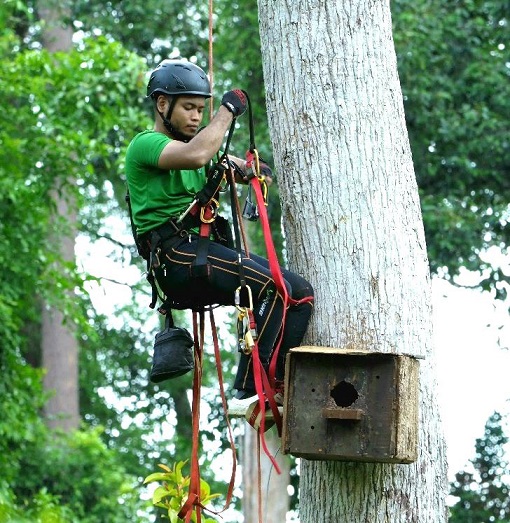
The Initiative undertaken by Sabah Forestry Department
Sabah is known for its immensely rich and interesting fauna, including arboreal wildlife. In the tropical rainforests, certain arboreal animals, such as hornbills, flying squirrels and other small birds rely on natural tree cavities as their nesting sites. These animals prefer mature trees and conducive location as their nesting sites. However, due to land-use changes and other environmental pressures, the natural nesting sites or cavities are declining and difficult to find. Therefore, the Sabah Forestry Department took the initiative in 2017 to set up artificial nest boxes as an alternative practical solution to address these challenges, focusing mainly on hornbills and flying squirrels. In line with the Sabah Forest Policy 2018, the Chief Conservator of Forests, Datuk Frederick Kugan, emphasizes that the department has been putting much effort in protection of forest biodiversity, including wildlife conservation, and at the same time, promoting natured-based tourism in generating revenue for the State. This project, undertaken by the Forest Research Centre in Sepilok, led by Pg. Mohd. Sahlan Salam and his Wildlife Research Team, aims to integrate artificial nest boxes into wildlife research and conservation efforts, enhancing ecological understanding and promoting nature tourism. Installing artificial nest boxes can also elevate ecosystem stability by supporting species that play vital roles in seed dispersal which can create long-term sustainability of forest ecosystem. By increasing the visibility of wildlife, nest boxes can help promote conservation awareness, environmental education and nature tourism respectively, notably at the Rainforest Discovery Centre in Sepilok, which is under the management of Sabah Forestry Department.
Study sites installed with nest boxes
The artificial nest boxes were installed and are being monitored, mainly at the Rainforest Discovery Centre (RDC) in Sepilok, as well as other selected areas, namely Sg. Pin Conservation Area (SPnCA) in Kinabatangan, My Nature Resort in Sepilok, and the Deramakot Forest Reserve in central Sabah. These sites were selected based on the suitability of their environment that have unique criteria for ecological and biodiversity research, with the focus on forest conservation, wildlife management, human impact and sustainable tourism. RDC features a well-structured forest and canopy ecosystem that promotes environmental education and forest recreation. It has the longest rainforest skywalk in Sabah of 620 m in length. SPnCA is associated by riverine ecosystem, characterized by highly fragmented landscape, which is crucial for conservation biology and research, whereas My Nature Resort in Sepilok is adjacent to RDC that offers an opportunity for nature tourism and is suitable for studying wildlife behaviour in close proximity to human activities. Deramakot is a commercial forest reserve, internationally known as a successful model for promoting conservation while supporting timber production. Deramakot is the longest-standing FSC-certified tropical forest in the world for a remarkable 28 years! Therefore, wildlife conservation strategies are crucial for these areas to support the sustainable forest management and biodiversity conservation.
Status of nest installation
Since its establishment in 2017, the Wildlife Research Unit of the Forest Research Centre has been constructing and installing the artificial nest boxes for hornbills and flying squirrels at the designated study sites. The nest boxes were installed using the rope-and-pulley system and were placed according to the specific criteria based on the targeted species. There are some key considerations, such as height of installation, orientation, forest canopy, environmental factors and human disturbance factors which are contributing to the success of nesting and conservation effort. The nest boxes for hornbills were installed with at least five people helping out (including two climbers), at the height between 20 to 30 meters depending on the forest structure. Meanwhile, the nest boxes for flying squirrels were installed at the height between 10 to 30 meters, and it is less laborious, with two staff involved.
Nest Occupancy
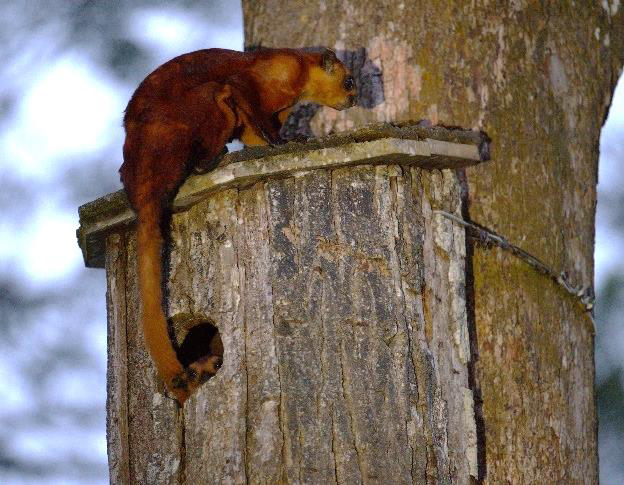
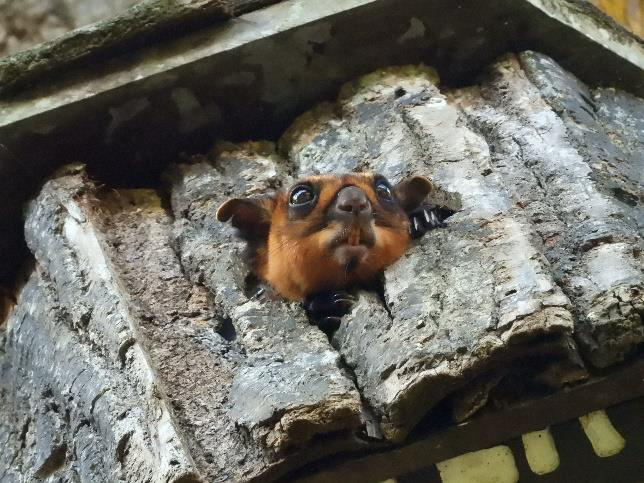
To date, a total of 26 nest boxes were designed for three species of giant squirrels, namely Red Giant Flying Squirrel, Thomas’s Flying Squirrel, and Black Flying Squirrel. It is interesting to note that all the nest boxes are being occupied by the flying squirrels! In addition, the Red Giant Flying Squirrels have raised three off-springs over two years.
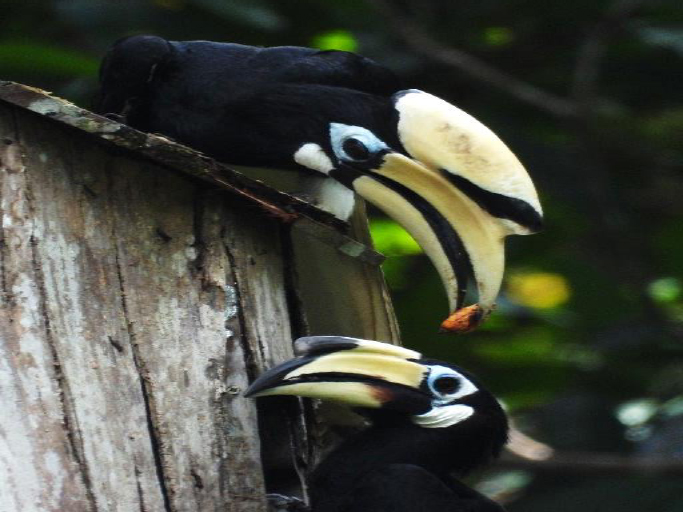
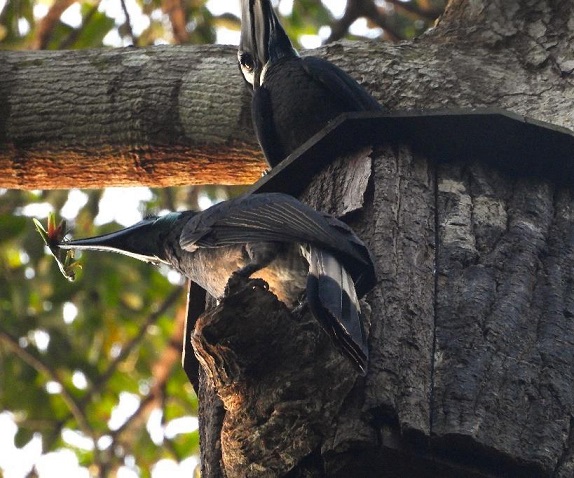
Another 16 nest boxes were designed for eight species of hornbills in Sabah. Of all the boxes, five have been occupied by Bushy-crested Hornbills, Asian Black Hornbills, and Oriental Pied Hornbills, with occasional use by giant squirrel species. Additionally, two pairs of Bushy-crested Hornbills have successfully completed a breeding cycle. The nest occupancy is being monitored regularly by using visual inspections and camera traps. The data, such as nesting behaviour, reproductive success, and population dynamics of targeted species are being recorded.
The successful occupancy and breeding cycle of flying squirrels and hornbills indicate that the artificial nest boxes provided significant biological requirement for these arboreal species and contributed to the conservation of these species.
The way forward
Datuk Frederick Kugan reiterated that the integration of artificial nest boxes into wildlife conservation efforts offers significant ecological and nature tourism benefits. By providing critical habitats for various species, these nest boxes contribute to the preservation of biodiversity and support the growth of local wildlife populations. Additionally, strategically placed nest boxes enhance wildlife tourism by creating unique opportunities for nature observation and education, fostering a deeper connection between visitors and the natural world. Through these efforts, artificial nest boxes serve as a vital tool in promoting sustainable conservation practices while simultaneously boosting eco-tourism, leading to a more harmonious relationship between humans and wildlife.
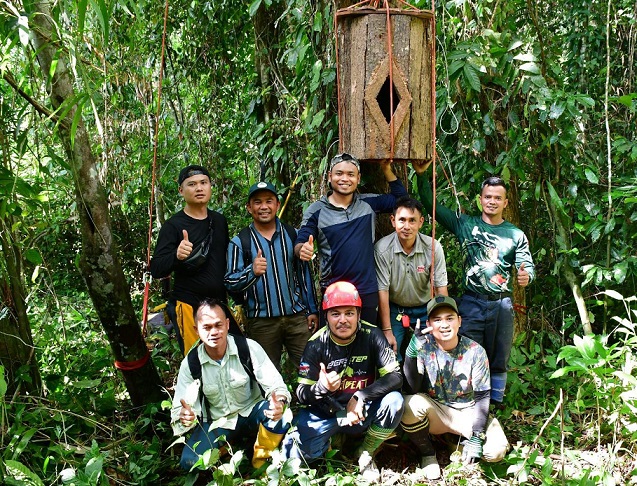
Follow our Facebook page ConserveByU for our latest updates.
